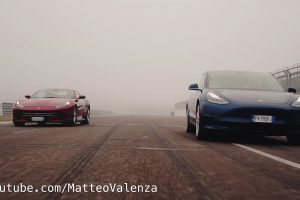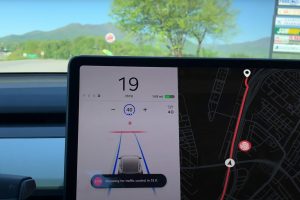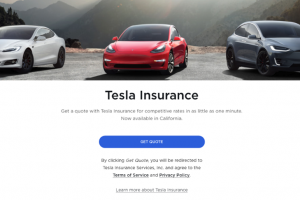For the second year in a row, my family embarked on a massive EV road trip. Five of us — my wife, 3 year-old, 7-year-old, and 17-year old exchange student — piled into a rented Model 3 and drove 2,661 miles across the Northeast to see family and friends and enjoy seven beautiful states. What blew our mind is how little we spent on fuel for our vacation. While the rest of the gas-bound world winces each time they fill up at the gas pump, the electric fuel for the thousands of miles we drove didn’t even come to $100.
Planning An EV Road Trip
Last year we drove our own Model 3 cross country from Portland to Ohio, crossing 2700 miles on our way east and taking a 5,000-mile, 12-state, scenic southern route back. This year we flew across most of the country (in one of our increasingly rare flights, which we later offset) and thus looked for an EV to rent. This is unfortunately still a challenge. Hertz, for example, nine months after its big announcement about buying 100,000 Teslas, only has the vehicles available for rent in 25 cities, and when we booked our rental a couple months ago, this number was even lower. Our only option to rent an EV was the peer-to-peer car sharing site, Turo.
After scanning the Columbus, Ohio, vicinity and looking at a dozen or so options, we booked Markus’ white Tesla Model 3 for our month-long road trip. To be honest, we didn’t consider any options other than Tesla to rent. We’ve owned a Model 3 for three years, and despite being really excited about all new EVs from other automakers and the rapidly improving fast charging networks across the US (as well as our annoyance with Elon and his all-too public shenanigans), we know from experience that the Tesla integrated charging network is leaps and bounds ahead of anything else. We previously owned a first generation Nissan Leaf, and I’ve driven many other electric vehicles through my previous job at a nonprofit promoting electric transportation, and with the exception of Tesla’s supercharger network, it’s still unfortunately a crap shoot as to whether you’ll have enough chargers or the chargers will be working when you show up to fuel your vehicle.
What We Paid For The Trip
Renting any car these days is expensive. It feels like not too long ago, you could rent a car for under $500 for a month, but a quick scan of a monthly car rental in Columbus, Ohio (where we picked up and dropped off our vehicle) shows the lowest priced gas car at nearly $1,300.
But renting a gas car wasn’t an option for us. We’ve been proud EV owners since 2017, and it’s hard to go back to loud engines and smoking tailpipes that are directly feeding the climate-crisis after tasting the silent, smooth, tailpipe-less alternative.
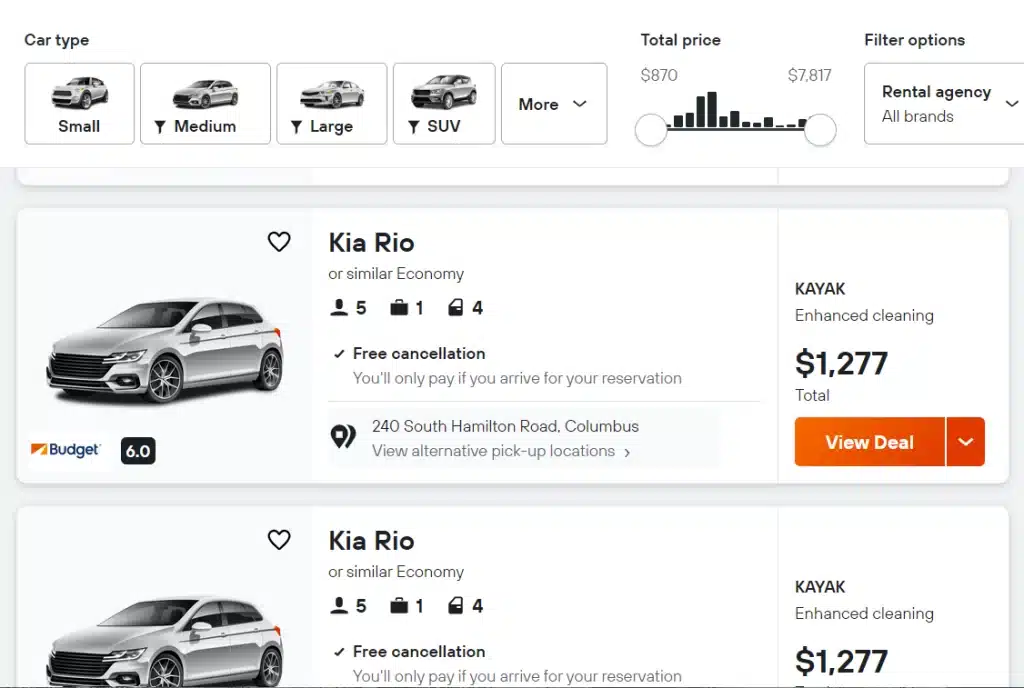
Markus’ Model 3 cost us $2,000 for a 31-day rental, which came to $64 a day. We booked several months ahead and benefited from a monthly price discount, so I’m not sure if that’s exactly representative of the price for a shorter term summer EV road-trip. (As an aside, it also feels good to know that, in using Turo, most of our rental payment goes to an entrepreneuring individual rather than a large corporation.)
Charging
We started the trip in Columbus, OH, then drove to Pittsburgh, PA, to visit family and then to New York City for four days of car-less fun. From there we drove to Portland, ME, and spent a few days exploring natural beauty and beaches, visiting family and friends, and getting a work tour of one of the best state efficiency and heat pump programs in the country (thank you, Andy Mayer and Efficiency Maine). Then we were off for another long day of driving to see friends in Syracuse, NY, and then to Cleveland, OH, and finally back to Columbus to hand over the car and return home. This route meant that we had four long days of driving, averaging over 400 miles per day, which meant when not driving we were almost always plugged in.
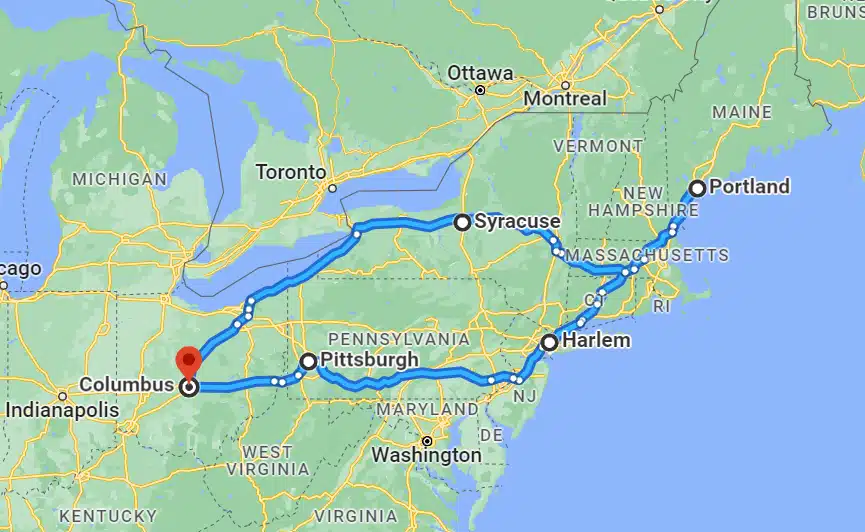
On this summer’s trip, we stopped at 12 Tesla Superchargers and never had to worry about a bad charging experience. As Northwesterners on a journey across the country, we also appreciated that the car would plan our entire trip for us, calculating exactly which chargers we would need to stop at in Tesla’s vast network, and how much time we would spend at each one. This system is an immense competitive advantage for Tesla (and will remain so until charging stations are as ubiquitous as gas stations and/or other automakers build their own charging networks), and makes Tesla EV road trips as easy, if not easier, than ICE ones.
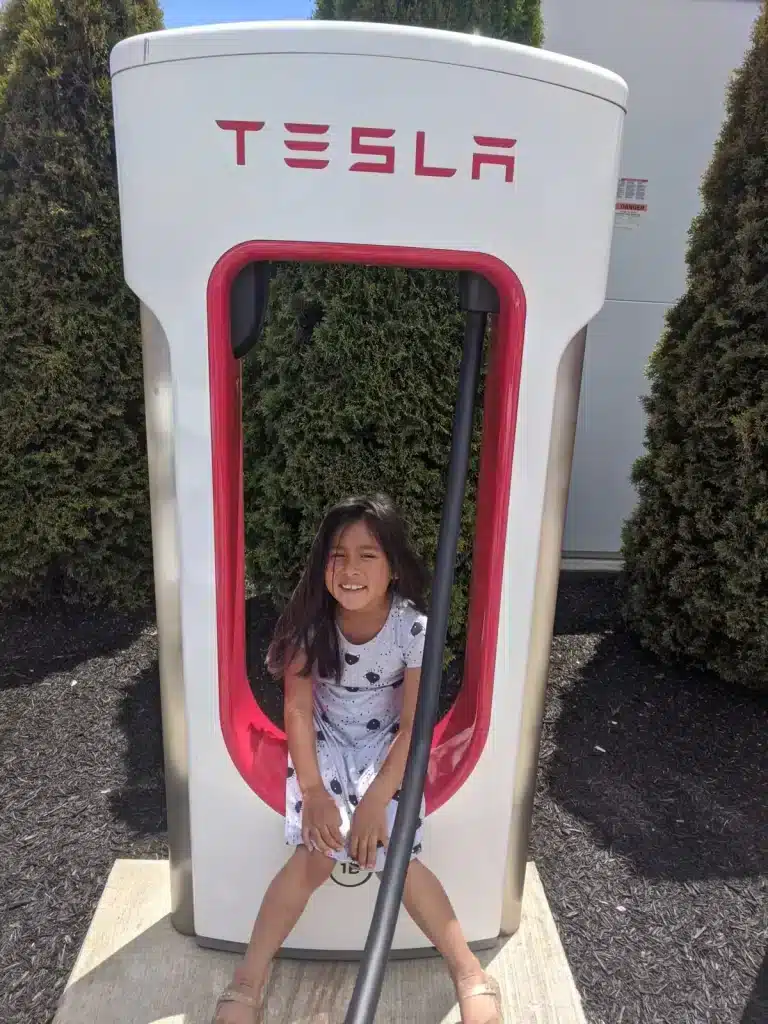
On the other hand, Tesla has raised the price of supercharging dramatically in the past few years — from 24 cents per kWh in many places a couple years ago, to now 45 cents or more at every station we visited on our trip.
This monopoly on charging is a real risk to the consumer, as Tesla (which makes up 70% of the current EV market) can seemingly raise its prices at whim. There isn’t much competition to keep this greedy, corporate temptation in check because Tesla drivers can’t charge at most other stations without an adapter.

The good news is that even on a road trip, drivers aren’t dependent on Tesla for all, or even most, of their fuel. We charged 12 times at Superchargers, getting 206 kWh of electric fuel from Tesla, and this cost us $95. But our total trip used 517 kWh (the equivalent of 14 gallons of gas) and the other 311 kWh (60% of our fuel) came from plugging into standard 110 volt outdoor outlets at our generous hosts’ homes.

We plugged in at virtually every overnight stop on our trip, including a parking garage in NYC. An important lesson is that electric fueling opportunities are everywhere, and only costs the outlet owner a couple extra bucks on a monthly electric bill. Tesla owners are dependent on the now expensive (but definitely still worth it) Tesla Supercharger network for fast charging on days with long drives, but they can complement this charging with virtually any other outlet able to slowly fuel their vehicles for one fifth the cost of gas.
The Tesla we rented from Markus is one of the few Model 3s with only 215 miles of range as it was an effort to fulfill its promise of a $35,000 EV. Our car at home has 310 miles of range, and we weren’t quite sure how the lower range model would measure up on days with 400-500 miles of driving. It ended up being totally fine with almost the same convenience as our longer range vehicle. On longer days, it may have required three charging stops instead of two, but when traveling with young kids, stopping every 2-3 hours for 15-20 minutes is almost a requirement anyways.
One thing that helped is that we averaged an awesome 194 watt-hours per mile over the trip, which translates to something like 160 mpg for ICE cars, which helped reduce our charging needs. This is largely due to our seasoned hypermiling abilities where we don’t drive fast and keep the windows down instead of blasting the AC. This makes each kWh go further. My wife also graciously puts up with me checking how efficient she’s driving every 30 minutes or so too. On this trip, I’m proud to say the student has become the master, and she ended up beating my average.
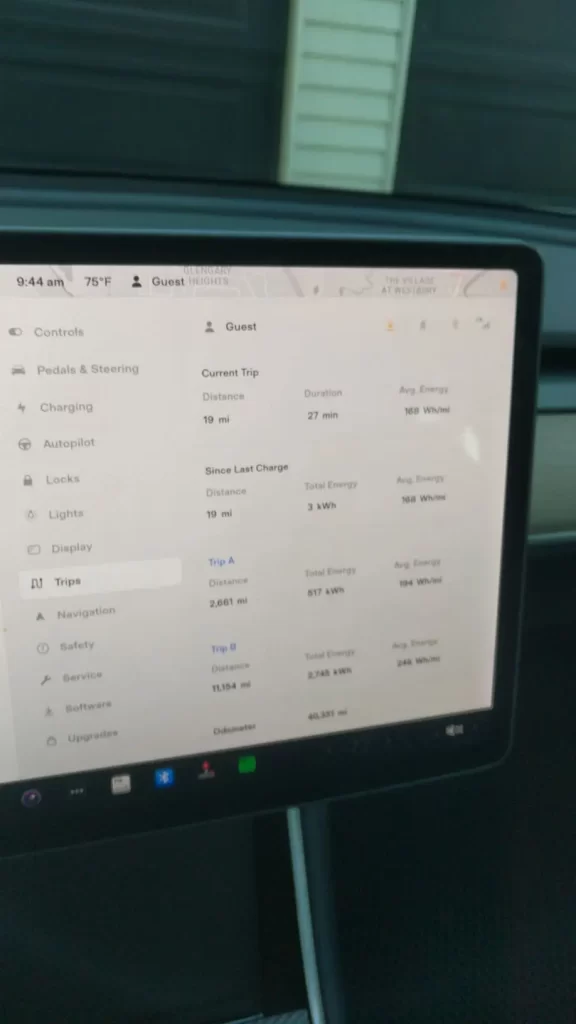
Final Stats
All in all, our massive EV road trip was amazing — good visits, good sites, good transportation, and good times. We spent $95 in electric fueling costs to drive 2,661 miles. If we had rented a gas car that got 25 mpg, with gas at $5.00 per gallon (the average price during our trip), we would have spent $532 on gasoline, and funded petro-states, petro-corporations, and the climate crisis. Instead we saved $437 in fuel costs on our trip and these fuel savings almost brings the Tesla rental to cost parity with an ICE car road trip. We spent a mere $286 more for a full month of driving a Tesla, which provides a superior driving experience on so many levels.
| Type of car rental | Month-long Rental Cost | Fueling Cost | Total Cost |
| Tesla Model 3 | $2,000 | $95 | $2095 |
| Cheapest ICE car | $1,277 | $532 | $1809 |
Note that the electric fueling costs above don’t account for the 311 kWh we charged at our hosts’ houses. At 15 cents per kWh, this would add another $47 in their expenses, and doesn’t really change the point.
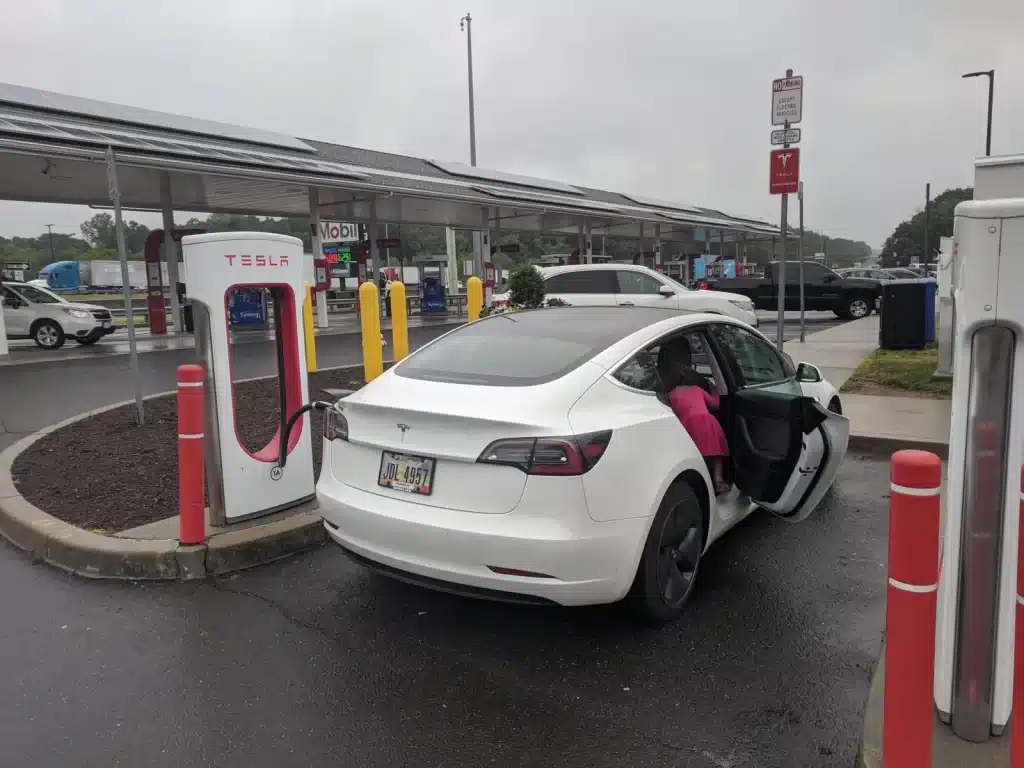
Given the high gas prices these days, I hope our trip shows how much financial sense it makes to rent, drive, and if you haven’t already done so, buy an EV. Even with the limited electric rental vehicles available and the cost premiums of a deluxe Tesla, our expenses were almost comparable with renting any cheap ol’ gas car. Just imagine the near future when many more vehicles are electric and charging stations are ubiquitous. We’ll have arrived in the promised land where the lowest cost option is the one keeping our skies and planet clean.
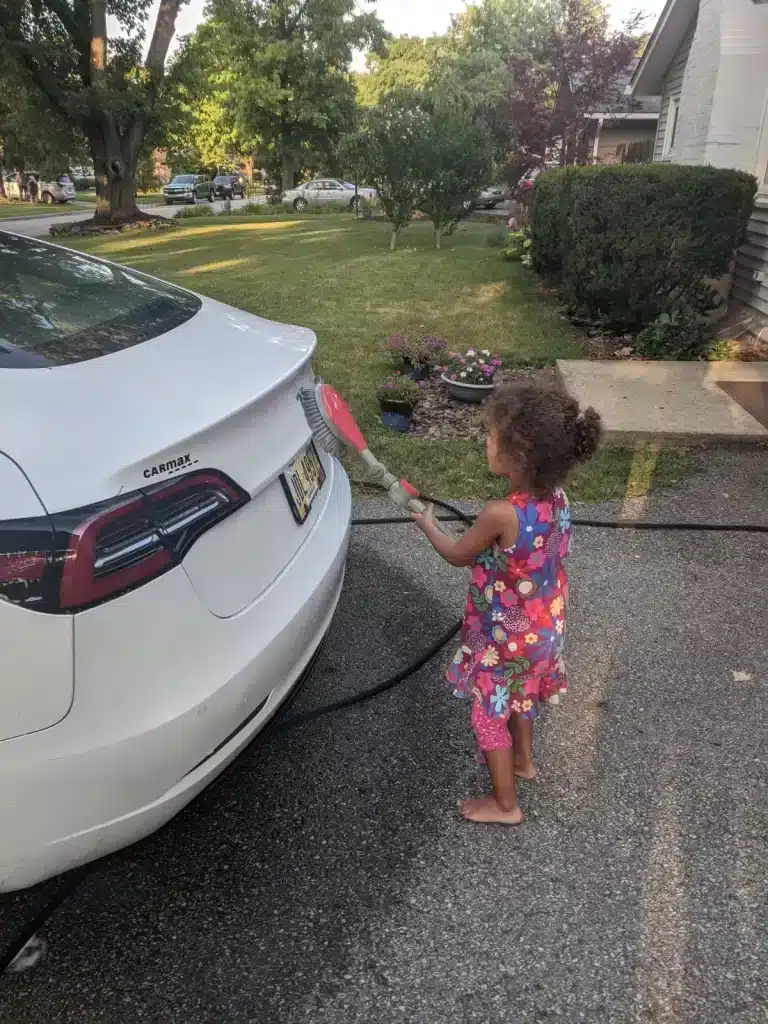
Huge thanks to Naomi Cole, my hypermiling life partner of 15 years for her awesome edits and contributions to this article.



